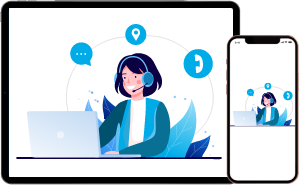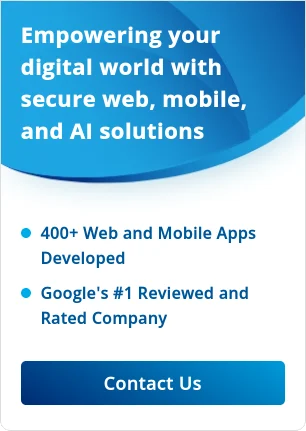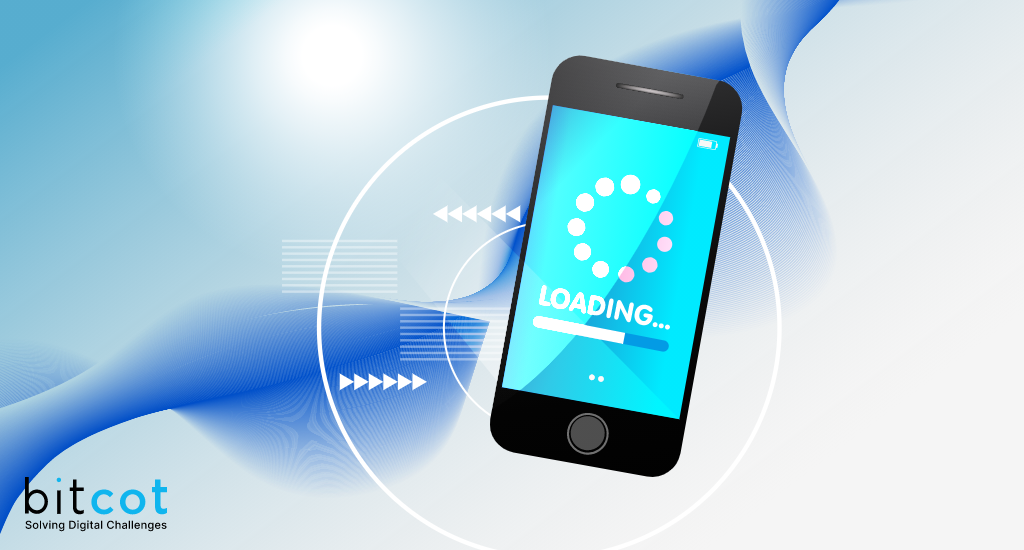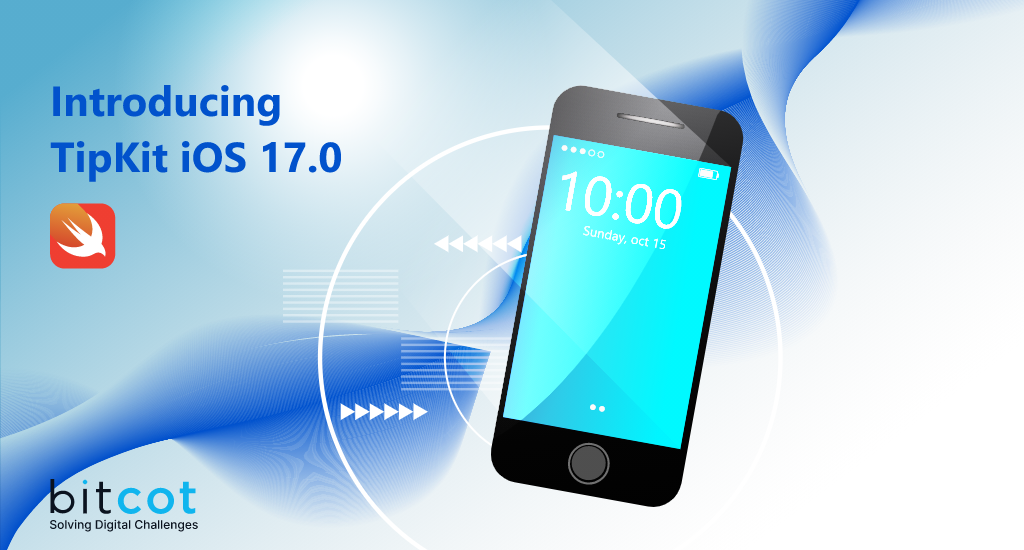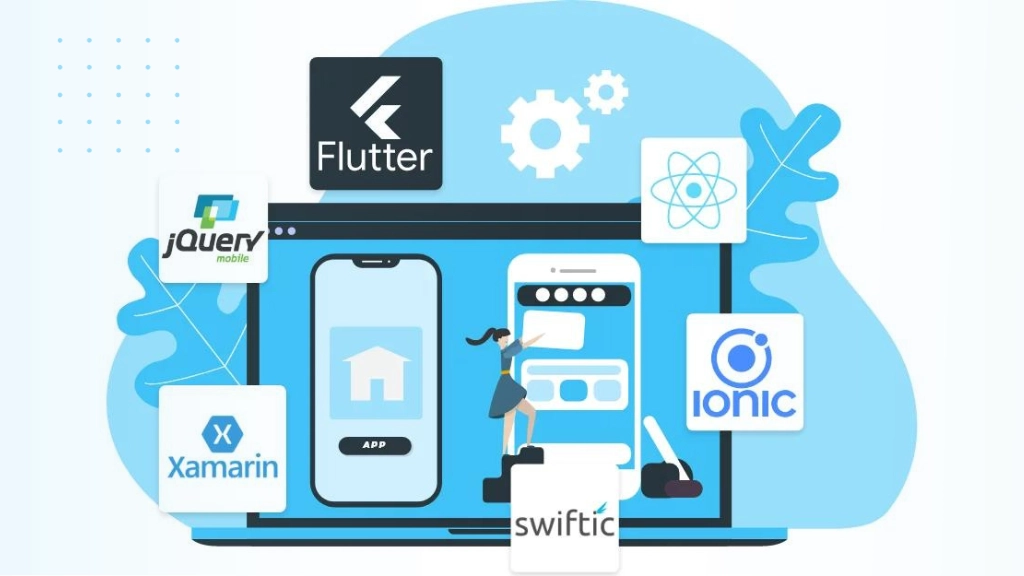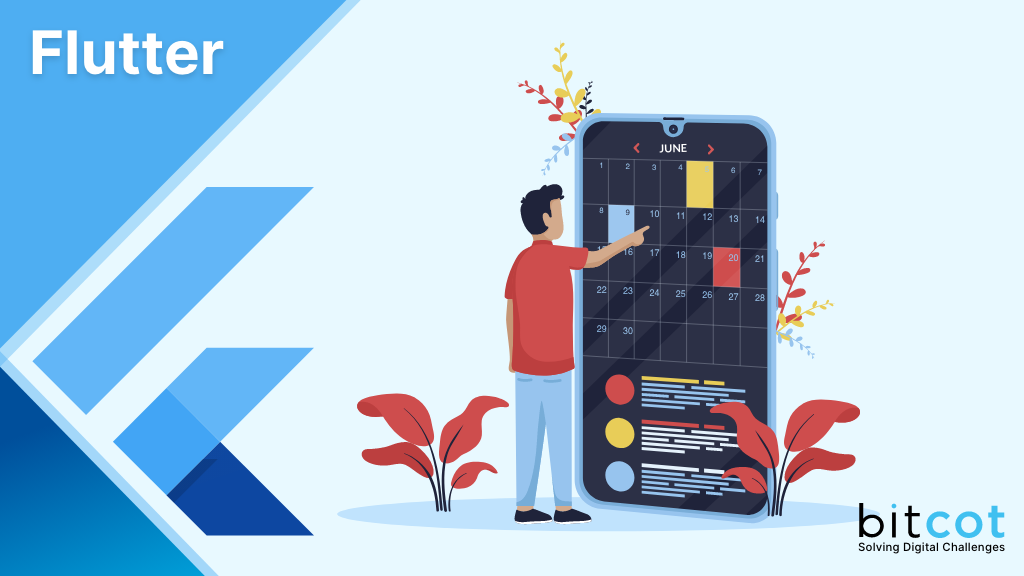
Flutter is a mobile app development framework created by Google that allows developers to create high-quality apps for iOS and Android platforms. Flutter has become increasingly popular due to its many benefits, including cross-platform compatibility, faster development, and a high-quality user interface. In this blog, we’ll explore Flutter, the app development process, its key features, advantages, successful examples, challenges, and more.
1. What is Flutter?
A. History and Background of Flutter
Google released Flutter in May 2017 as an open-source mobile app development framework. It was developed to provide a better alternative to traditional app development frameworks with slow development times, high costs, and limited customizability. Flutter aims to provide developers with a fast, reliable, and flexible way to create high-quality apps for multiple platforms.
B. Overview of Flutter Architecture
Flutter uses a layered architecture that enables developers to customize every aspect of the app, from design to functionality. The architecture is divided into four layers: the framework layer, the engine layer, the platform layer, and the application layer. The framework layer is the core of Flutter and includes all the essential libraries and widgets developers use to build apps. The engine layer provides a low-level rendering engine that enables high-performance graphics. The platform layer provides access to native components, while the application layer contains the actual app code.
C. Comparison with Other App Development Frameworks
Flutter is often compared to app development frameworks like React Native, Xamarin, and NativeScript. Flutter’s key advantage over these frameworks is its ability to provide a single codebase for multiple platforms, resulting in faster development times and cost savings. Additionally, Flutter’s hot reload feature allows developers to make changes to the app in real time, which can significantly speed up the development process.
2. Flutter App Development Process
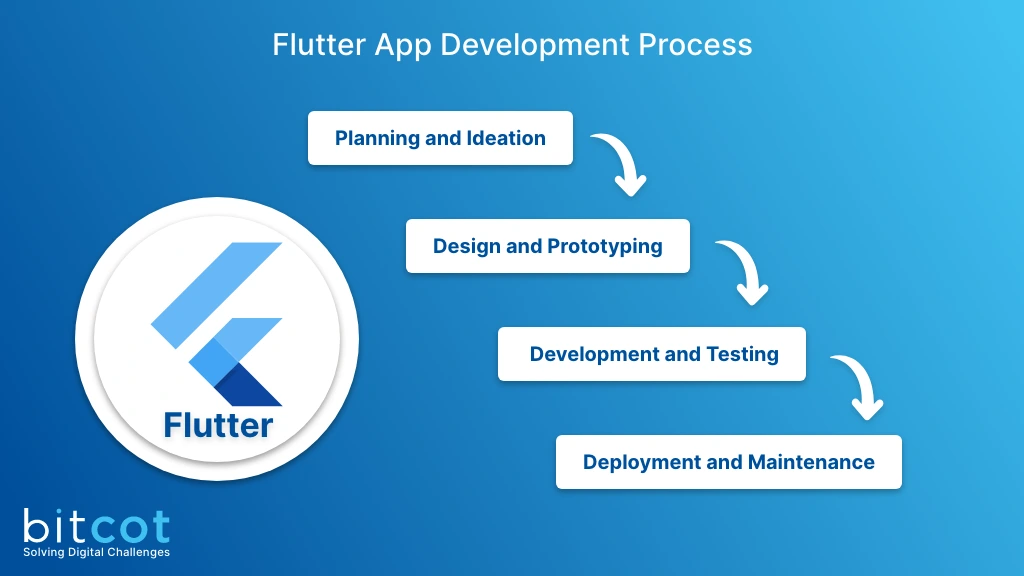
A. Planning and Ideation
The app development process starts with planning and imagination. This involves identifying the target audience, defining the app’s purpose and value proposition, and creating a primary architecture.
B. Design and Prototyping
The next step is designing and prototyping the app. This involves creating wireframes and mockups to visualize the app’s user interface and designing the app’s look and feel.
C. Development and Testing
Once the app design is finalized, the development and testing phase begins. Developers use Flutter’s libraries and widgets to build the app’s functionality and user interface. Testing is done throughout the development process to ensure the app functions correctly.
D. Deployment and Maintenance
The final phase is deploying and maintaining the app in the app store. This involves monitoring the app’s performance, fixing bugs, and updating the app to meet new requirements.
3. Key Features of Flutter
A. Hot Reload
Flutter’s hot reload feature allows developers to make changes to the app code and see the results in real time. This significantly speeds up the development process and allows developers to identify and fix bugs quickly.
B. Widgets
Flutter’s widgets are reusable UI elements that enable developers to create high-quality, customizable user interfaces. Widgets can be combined to create complex UI elements, making it easier to create complex user interfaces.
C. Dart Programming Language
Flutter uses the Dart programming language, a modern, open-source programming language developed by Google. Dart is easy to learn and has a clean syntax, making it an ideal language for app development.
D. Material Design and Cupertino Design
Flutter comes with two pre-built design systems: Material Design and Cupertino Design. Material Design is a system created by Google that emphasizes clean, modern design, while Cupertino Design is a system created by Apple that emphasizes a sleek, minimalist design. These design systems make it easier for developers to create high-quality, visually appealing user interfaces.
4. Benefits of Flutter App Development
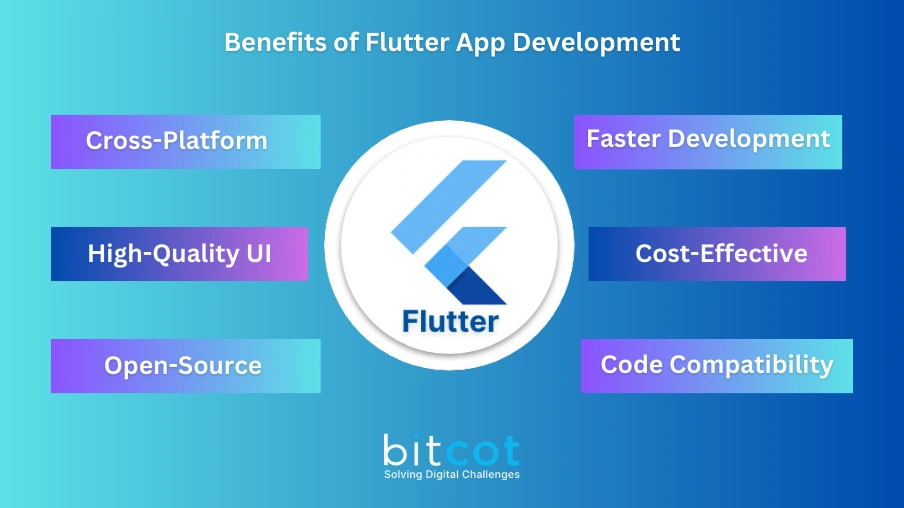
A. Cross-Platform App Development
One of the most significant benefits of using Flutter is that it allows developers to create apps for both iOS and Android platforms using a single codebase. This means the development process is faster and more efficient, as developers do not have to write separate code for each platform.
B. Faster Development and Deployment
Flutter’s hot reload feature lets developers view changes in real-time, making the development process faster and more efficient. Additionally, Flutter’s widgets make it easy for developers to create custom designs quickly.
C. High-Quality User Interface
Flutter’s customizable widgets and pre-built design systems make it easier for developers to create high-quality, visually appealing user interfaces.
D. Cost-Effective App Development
Flutter’s cross-platform compatibility and faster development times make it a cost-effective option for businesses looking to develop high-quality apps.
E. Open-Source
Flutter is an open-source framework, meaning developers can access the source code and contribute to its development. This also means a vast community of developers can provide support and assistance when needed.
F. Compatibility with Existing Code
Flutter is compatible with existing code, so developers can integrate Flutter into their existing projects without starting from scratch.
5. Examples of Successful Flutter Apps
A. Google Ads
Google Ads is a mobile app created using Flutter that allows users to manage their Google Ads accounts on the go. The app has received positive reviews for its user interface and ease of use.
B. Alibaba
Alibaba, China’s largest e-commerce company, used Flutter to create an app for its AliExpress platform. The app has received positive reviews for its speed and user interface.
C. Realtor.com
Realtor.com, a leading real estate website, used Flutter to create its mobile app. The app has received positive reviews for its speed and user interface.
D. Reflectly
Reflectly is a mobile app created using Flutter that provides users with a journaling platform. The app has received positive reviews for its user interface and ease of use.
E. Xianyu
Xianyu is a mobile app created by Alibaba using Flutter that allows users to buy and sell second-hand items. The app has received positive reviews for its user interface and usability.
6. Challenges of Flutter App Development
A. Learning Curve
Flutter’s unique architecture and Dart programming language can present a learning curve for developers who are new to the framework.
B. Limited Third-Party Libraries
Flutter’s relative newness means fewer third-party libraries and resources are available compared to other app development frameworks.
C. Limited Access to Native APIs
Flutter’s cross-platform compatibility means that it may not have full access to native APIs on all platforms, which can limit app functionality.
D. Large App Size
Flutter’s architecture and pre-built design systems can result in larger app sizes compared to other app development frameworks.
7. Conclusion
Flutter is a robust app development framework offering many benefits to developers and businesses. Its cross-platform compatibility, customizable widgets, and pre-built design systems make it easier and faster to create high-quality apps. While there are some challenges associated with Flutter app development, the benefits outweigh the challenges, making it a reliable and cost-effective option for businesses looking to develop high-quality mobile apps.
If you’re looking for a reliable and experienced Flutter app development company, BitCot is an excellent option. As a leading Flutter app development company, BitCot has a team of experienced developers who can create custom, high-quality apps for your business. BitCot’s expertise in Flutter app development has helped many businesses achieve their goals and stay competitive in their respective industries.
By investing in Flutter app development with BitCot, your business can leverage the full potential of this robust app development framework. Whether you want to create a new app or improve an existing one, BitCot can help you achieve your goals. So, don’t hesitate to invest in Flutter app development for your business and take advantage of all its benefits.
8. FAQs
Q: What programming language does Flutter use?
Flutter uses Dart, a statically-typed programming language.
Q: What is the role of flutter in mobile app development?
Flutter enables developers to create high-quality native apps for iOS and Android platforms using a single codebase. It reduces development time and costs, provides customizable widgets and pre-built design systems, and offers a faster development process through its hot reload feature. Flutter is a powerful and flexible framework for mobile app development.
Q: Can Flutter be used to develop apps for both iOS and Android platforms?
Yes, Flutter can be used to develop apps for both iOS and Android platforms.
Q: Is Flutter a good choice for startups and small businesses?
Yes, Flutter is a great choice for startups and small businesses because it allows developers to create high-quality apps at a lower cost and in a shorter amount of time than traditional app development methods.
Q: What types of apps can be developed using Flutter?
Flutter can be used to develop a wide range of mobile apps, including e-commerce apps, social media apps, gaming apps, and more.
Q: Is Flutter an open-source framework?
Yes, Flutter is an open-source framework, which means that developers can access the source code and contribute to its development.
Q: Where can I find a reliable Flutter app development company?
There are many Flutter app development companies available, but it’s important to do your research and choose a reputable company with experience in Flutter app development. BitCot is a reliable Flutter app development company that offers expertise in creating custom, high-quality apps for businesses. With experienced developers, BitCot can help businesses leverage the full potential of Flutter and achieve their app development goals

